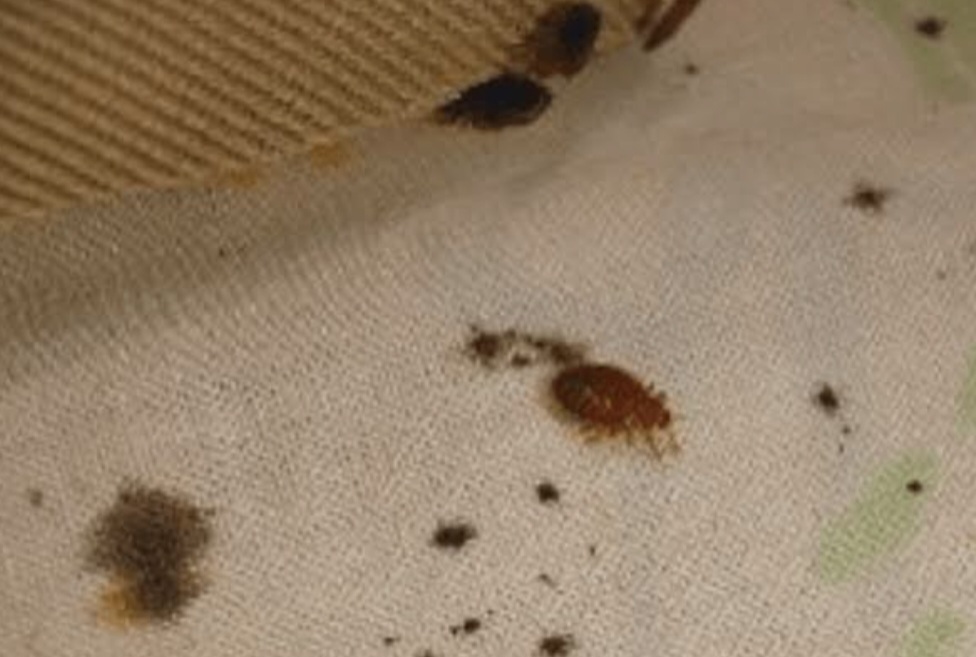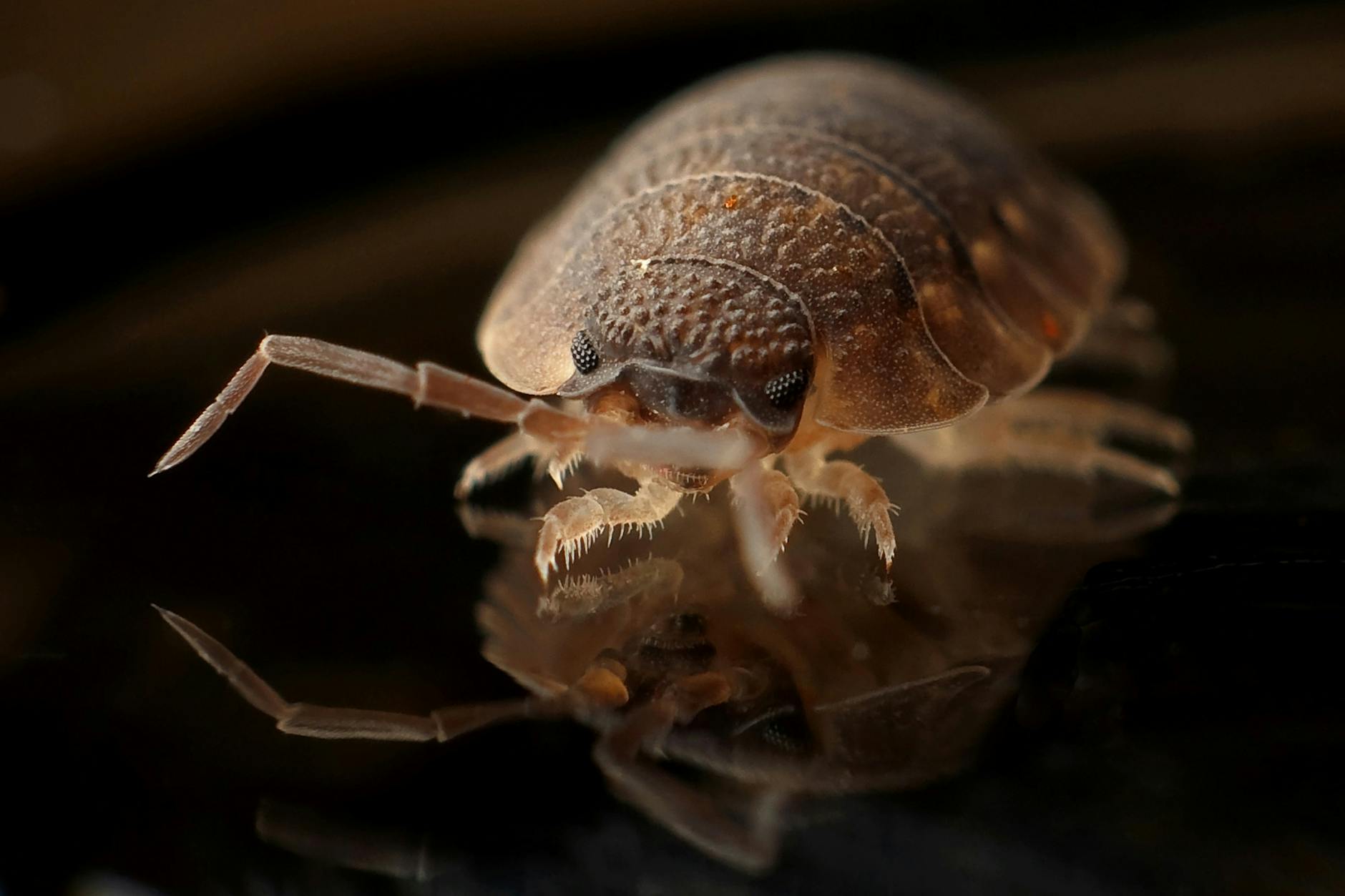Pests are sneaky little invaders, aren’t they? They hide in the most unexpected places, waiting to turn your peaceful property into their breeding ground. But don’t worry—you’ve got this! Learning to spot the early warning signs can save you from the frustration (and expense) of a full-blown infestation. Let’s dive into what you need to watch out for, and remember, a little attention goes a long way.

1. Mysterious Bites and Itchy Nights
Have your tenants or guests complained about itchy bites? Bedbugs, the infamous culprits, leave small red marks in clusters or lines. While you won’t always see the bugs themselves, the bites are often a clear sign they’re around. If tenants start calling about sudden nighttime itching, it’s time to investigate. Look closely at mattresses, bedding seams, and furniture crevices. These are the bedbugs’ favorite hangouts, and catching them early can make a huge difference.
Another clue? Small blood stains or dark, rust-colored spots on bedding. These could be signs of crushed bedbugs or their droppings. Gross, right? But hey, it’s better to know and act fast than to let the problem spiral out of control.
2. Strange Smells That Just Won’t Go Away
Ever noticed a weird, musty smell in a room? No, it’s not your tenants’ leftover laundry—it could be bedbugs! They release a sweet yet unpleasant odor when their numbers start to grow. If you or your tenants can’t figure out where that smell is coming from, it’s time to grab a flashlight and inspect the room.
But bedbugs aren’t the only pests that smell. Cockroaches also bring their unique “aroma,” which is oily and musty. Yuck! Pay attention to any lingering scents that seem off, especially in kitchens, bathrooms, or storage areas. Trust your nose—it can often lead you straight to the problem.
3. Unexplained Marks and Droppings
If you spot tiny black dots in corners or along baseboards, don’t just brush it off as dirt. These could be pest droppings! Bedbugs, cockroaches, and other creepy crawlies leave traces behind, and their droppings are a dead giveaway.
Bedbugs often leave droppings near their hiding spots, like along mattress seams or behind headboards. For cockroaches, you’ll notice tiny, pepper-like specks near food sources or water pipes. Both types of droppings may seem small, but they’re huge clues that pests are lurking nearby.
Also, keep an eye out for scratch marks on walls, nibbled fabric, or damaged furniture. These are signs of other pests, like rodents or mites, making themselves at home in your property. Take action the moment you spot these signs to stop the invasion in its tracks.
4. Noises in the Night
Have you ever been startled by mysterious rustling sounds at night? It’s not a ghost—it’s likely a pest. Rodents, in particular, are most active at night and love scurrying through walls, ceilings, or under floorboards. If you or your tenants hear scratching or gnawing noises, it’s a big red flag that something unwanted has moved in.
Bedbugs, on the other hand, are silent troublemakers. While you won’t hear them crawling around, their nighttime feeding habits leave visible evidence on your skin and bedding. Either way, if strange sounds or signs disturb your tenants’ sleep, it’s time for a thorough inspection.
5. Seeing Just One Pest Is Never “Just One”
The harsh truth about pests is that seeing one often means many more are hiding nearby. Found a single bedbug or cockroach? Unfortunately, they rarely come alone. Pests are great at staying out of sight until their population explodes.
So don’t dismiss a lone sighting—it’s your cue to act quickly. Check hidden spots like behind appliances, under furniture, and in dark corners. The sooner you take action, the easier it’ll be to tackle the problem without disrupting your tenants’ lives.
6. Tenant Complaints and Online Reviews
Last but not least, listen to what your tenants or guests are saying. If someone mentions pests, don’t brush it off. Complaints, even vague ones, are often early indicators of a problem. Also, keep an eye on online reviews for your rental property. Negative reviews about bedbugs or cockroaches can hurt your reputation and business.
Be proactive! Conduct regular inspections, address complaints quickly, and let your tenants know you’re committed to their comfort. This not only helps you spot issues early but also builds trust and keeps your properties thriving.
Spotting pests early isn’t rocket science, but it does take vigilance. By paying attention to these signs—bites, smells, droppings, noises, and complaints—you can stay one step ahead. Remember, your rental property is a place for people, not pests! Stay sharp, act fast, and keep Bedlam Antiparasite in your arsenal for a pest-free home.
Common Misconceptions About Bedbug Presence
When it comes to bedbugs, the myths seem to spread faster than the bugs themselves. You’ve probably heard some of these misconceptions, and while they can be amusing, they often lead to delayed action—or unnecessary panic. Let’s break down these common misunderstandings so you can focus on keeping your space pest-free without falling for the myths.

1. “Bedbugs Only Infest Dirty Homes”
One of the biggest misconceptions about bedbugs is that they only show up in unclean homes. You might think, “I keep my place spotless—no way I’ll ever see a bedbug!” Unfortunately, bedbugs couldn’t care less about your cleaning habits. They’re drawn to warmth, carbon dioxide, and easy access to their favorite snack: humans.
Even the fanciest, most pristine homes can fall victim to these sneaky little invaders. They’re hitchhikers, not house critics! They’ll cling to luggage, secondhand furniture, or even your clothes after a trip to a movie theater. So, if you spot bedbugs, don’t blame your cleaning routine. Instead, focus on identifying the source and tackling the problem head-on.
2. “You’ll Always See Bedbugs If They’re Present”
This myth gives bedbugs way too much credit for being obvious. The truth is, they’re experts at hide-and-seek. These tiny critters are nocturnal and prefer to stay hidden in cracks, crevices, and dark corners. You’re unlikely to spot them casually crawling across your floor during the day.
Most people don’t realize they have bedbugs until they start noticing bites—or worse, signs like droppings or bloodstains on bedding. So, if you don’t see them, it doesn’t mean they’re not there. Trust the signs, not just your eyes, when it comes to spotting these pests.
3. “Bedbugs Can Fly or Jump”
Ever hear someone say bedbugs jump like fleas or fly around like mosquitoes? It’s a laughable mental image, but totally false. Bedbugs can’t fly, jump, or leap tall furniture in a single bound. They’re wingless and slow-moving, relying on crawling to get from point A to point B.
This doesn’t make them harmless, though. They’re sneaky and patient, often crawling onto clothing, luggage, or furniture to hitch a ride into your home. But rest assured, if you see a pest jumping or flying, it’s not a bedbug—it’s likely something else you’ll need to deal with.
4. “Bedbugs Only Live in Beds”
Sure, the name “bedbug” suggests they’re exclusive to mattresses and box springs, but they’re far less picky than you’d think. These pests will happily hide in couches, curtains, carpets, and even electrical outlets. Essentially, any small, dark space near their food source (that’s you!) will do.
So, if you’re only checking your mattress for bedbugs, you might be missing the bigger picture. Expand your search to other areas in your home, especially places where people sit or rest for long periods. Bedbugs are adaptable, but knowing their hiding spots gives you the upper hand.
5. “If You Don’t Have Bites, You Don’t Have Bedbugs”
While bites are a common sign of bedbugs, they’re not the only indicator. Not everyone reacts to bedbug bites the same way. Some people develop itchy red welts, while others don’t show any reaction at all. If you’re not seeing bites but notice other signs—like droppings, eggs, or blood stains—don’t ignore them.
It’s also worth noting that bites can be mistaken for other conditions, like mosquito bites or skin allergies. The key is to look for a combination of signs, not just rely on bites alone, to confirm the presence of bedbugs.
6. “DIY Remedies Always Work”
Ah, the internet—the land of questionable advice and homemade remedies. You’ve probably read that essential oils, baking soda, or even dryer sheets can rid you of bedbugs. While some DIY tricks might repel pests temporarily, they’re rarely effective in eliminating an infestation.
Bedbugs are tough and resilient, and they require targeted solutions to eradicate. Professional-grade products or expert help is often the only way to fully get rid of them. So, while it’s tempting to try that “miracle cure” you saw on social media, it’s better to trust proven methods to avoid wasting time and money.
7. “Bedbugs Spread Diseases”
Here’s one bit of good news: unlike mosquitoes or ticks, bedbugs aren’t known to spread diseases. While their bites can be irritating and sometimes lead to secondary infections from scratching, they’re not carriers of harmful illnesses.
That said, bedbugs can still cause emotional distress, sleepless nights, and even financial strain if not dealt with promptly. So, while they’re not a direct health hazard, you’ll still want to address an infestation quickly to maintain your peace of mind.
By debunking these common misconceptions, you’re already one step closer to staying ahead of bedbugs. They may be sneaky, but with the right knowledge and tools, you can keep your space pest-free. Remember, bedbugs don’t discriminate—they’re equal-opportunity invaders. Stay vigilant, act fast, and always rely on trusted solutions to win the battle against these tiny nuisances!
Areas Landlords Often Overlook in Inspections
When it comes to property inspections, even the most diligent landlords can miss a spot—or ten. It’s easy to focus on the big-ticket items like leaky faucets and cracked windows, but pests like bedbugs can thrive in the nooks and crannies we tend to forget. Let’s take a closer look at some commonly overlooked areas and how you can stay one step ahead in your inspections.
1. Behind Appliances: Where Critters Love to Hide
When was the last time you moved the refrigerator or stove to see what’s lurking behind it? If the answer is “never” or “I don’t even want to know,” you’re not alone. These spots are often out of sight and out of mind, making them the perfect hiding place for pests like bedbugs, cockroaches, or even mice.
Appliances generate warmth, which pests love, and often collect crumbs and grease, creating a buffet. During your next inspection, take the time to slide out the appliances and give these areas a thorough check. Not only will you ensure a pest-free space, but you’ll also impress your tenants with your attention to detail.
2. Curtains and Drapes: The Overlooked Fabric Fortress
Curtains might add charm to a room, but they can also double as a pest playground if you’re not careful. Bedbugs, in particular, love to burrow into folds, seams, and the tops of curtain rods, where they’re almost impossible to spot at first glance.
To stay ahead, include curtains and drapes in your routine inspections. Give them a good shake, look for any suspicious signs, and don’t hesitate to suggest a deep clean if they’re starting to show their age. Your tenants (and their windows) will thank you.
3. Electrical Outlets: Tiny Spaces, Big Problems
Electrical outlets and switch plates might seem like an odd place to inspect, but you’d be surprised at what could be hiding there. Bedbugs are notorious for squeezing into the smallest of spaces, and the gaps around outlets make for a cozy retreat.
Use a flashlight to inspect these areas closely. If you notice any unusual markings, such as dark stains or small debris, it’s worth investigating further. A simple cover replacement or professional pest treatment can make a big difference in keeping these critters out of your property.
4. Under Furniture: Out of Sight, Out of Mind
Let’s face it—checking under beds, sofas, and cabinets is no one’s idea of fun. It’s dusty, awkward, and often results in finding things you’d rather not see. But for pests, these areas are prime real estate.
Bedbugs, in particular, thrive in hidden spots like the underside of furniture. During your inspections, take a few extra minutes to flip over cushions, look underneath bed frames, and inspect the baseboards near furniture. It might feel tedious, but it’s far better than dealing with a full-blown infestation later.
5. Closets and Storage Spaces: The Forgotten Zones
Closets are often crammed with belongings, making them a low-priority spot during inspections. However, these dark and undisturbed areas are an open invitation for pests. Bedbugs, moths, and even spiders can set up shop among clothes, shoes, and forgotten storage boxes.
Encourage tenants to keep closets tidy and inspect them periodically. Look for signs of pests along the edges of shelves, in corners, and even inside storage bins. A proactive approach can prevent small problems from turning into major headaches.
6. Carpet Edges: A Pest Highway
Carpets might look clean at a glance, but the edges and seams can be a haven for bedbugs and other pests. These spots are often overlooked because they’re hard to reach, but they’re worth a closer inspection.
Use a flashlight to check along the perimeter of carpeted rooms. Pay special attention to areas near furniture or along baseboards. If you notice fraying edges, debris, or suspicious stains, it might be time for a professional carpet cleaning—or a pest treatment plan.
7. Under Sinks: A Damp Welcome Mat
Under-sink cabinets are easy to overlook, but they’re a common hotspot for pests. The combination of moisture, darkness, and occasional food debris makes these areas incredibly attractive to bugs.
Check for leaks, water stains, or droppings during inspections. Sealing gaps and keeping the area dry can do wonders in preventing infestations. Plus, it’s a great way to maintain the overall health of your property’s plumbing system.
By paying attention to these often-overlooked areas, you’re not only protecting your property but also building trust with your tenants. A thorough inspection shows that you care about their comfort and safety, making you the kind of landlord they’ll want to stick with. So grab a flashlight, roll up your sleeves, and leave no corner unchecked—it’s the key to a happy, pest-free home!
Steps to Take if You Confirm Infestations
Discovering an infestation can feel like a nightmare, but don’t panic! Taking the right steps promptly can save your property—and your sanity. Follow these simple yet effective actions to tackle the issue head-on and regain control of your space.
1. Don’t Panic—Identify the Culprit First
The first thing you need to do is figure out what you’re dealing with. Bedbugs? Mites? Ants? Each pest has its unique traits and treatment methods. Take a close look at the signs—tiny blood spots on sheets might mean bedbugs, while sawdust piles could indicate termites.
If you’re unsure, call in a professional for an assessment. Identifying the pest early can help you avoid unnecessary treatments and focus on the right solution. Plus, knowing your enemy makes the battle feel a little less daunting.
2. Communicate with Tenants and Neighbors
If you’re a landlord, transparency is key. Let your tenants know what’s happening as soon as you confirm the infestation. No one likes unpleasant surprises, and open communication can build trust.
It’s also wise to inform nearby property owners, especially in shared housing complexes or townhomes. Pests don’t respect boundaries, and a joint effort can stop the problem from spreading further. Just remember to approach the conversation tactfully—no one wants to feel like their home is under attack!
3. Declutter the Affected Areas
Pests love clutter. It gives them endless hiding spots and makes treatment harder. Start by removing unnecessary items from the infested area.
Bag up clothes, bedding, and soft furnishings, but be careful—don’t just toss them in the corner or a common area. Seal everything tightly in plastic bags to avoid spreading pests to other parts of your property. Washing these items on high heat or having them professionally treated can eliminate pests hiding in fabrics.
Decluttering not only makes your space easier to treat but also gives you a clearer view of the infestation’s scope.
4. Call in the Professionals
DIY solutions are tempting, but some infestations need expert hands. Pest control professionals have the tools, knowledge, and experience to tackle even the most stubborn pests.
When hiring, look for certified pest control services with proven results. Discuss your pest problem in detail, and don’t hesitate to ask about their methods—especially if you or your tenants are concerned about chemicals or allergies. Hiring professionals might cost more upfront, but it’s a long-term investment in keeping your property pest-free.
5. Treat the Area Thoroughly
Once professionals are on board, they’ll likely recommend a mix of chemical and non-chemical treatments tailored to your situation. This could include sprays, heat treatments, or traps.
For landlords, it’s a good idea to accompany the pest control team during the initial treatment to understand their approach. This helps you answer tenant questions confidently and stay informed about what’s happening in your property.
Remember, pest treatments often require multiple sessions, so be prepared for follow-ups to ensure all pests—and their eggs—are completely eliminated.
6. Inspect Adjacent Spaces
Infestations rarely stay confined to one spot. After treating the affected area, check surrounding rooms, apartments, or houses. Pests like bedbugs can crawl through walls, vents, or even under floors.
Encourage tenants to monitor their spaces closely and report any signs immediately. If you’re proactive, you can stop a minor infestation from turning into a major property-wide disaster.
7. Implement Preventive Measures
Once the pests are gone, your work isn’t quite finished. Prevention is the best way to avoid repeat infestations. Educate your tenants about best practices, such as regular cleaning, proper food storage, and reporting any suspicious activity.
Consider investing in long-term solutions like bedbug-proof mattress covers, sealing cracks and crevices, and scheduling periodic pest control inspections. Taking these steps shows tenants you’re committed to maintaining a safe and pest-free environment.
8. Follow Up with Tenants Regularly
A quick check-in a few weeks after treatment can go a long way in maintaining tenant satisfaction. Ask if they’ve noticed any lingering signs of pests or have concerns.
These conversations not only help ensure the infestation is fully resolved but also reassure tenants that you’re attentive and proactive. Happy tenants are more likely to renew leases and leave positive reviews!
9. Evaluate the Costs and Keep Records
Infestations can be costly, but keeping records of everything—from pest control invoices to tenant communications—can protect you in the long run. If an infestation results from tenant negligence, you may need these documents to address damages or recover costs.
Additionally, tracking the expense helps you better plan for future pest prevention budgets and avoid surprises down the line.
10. Learn and Adapt for the Future
Every infestation is a learning experience, as unappealing as that might sound. Use what you’ve learned to create a solid action plan for the future.
Consider writing an inspection checklist, educating new tenants about pest prevention, and staying up to date on the latest pest control techniques. With every step you take, you’re making your properties more resilient against future pests—and making life easier for yourself and your tenants.
Handling an infestation isn’t fun, but it doesn’t have to be overwhelming. By staying calm, taking swift action, and prioritizing communication, you can minimize disruption and protect your property. With the right steps, you’ll have pests packing their bags—and your tenants breathing a sigh of relief—in no time!




